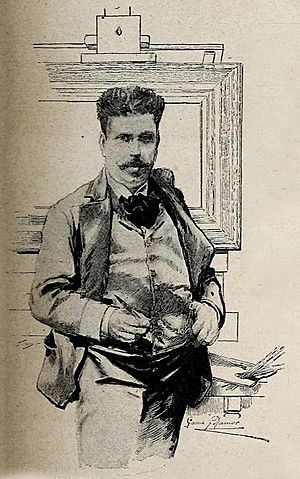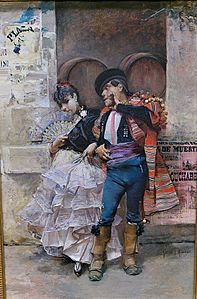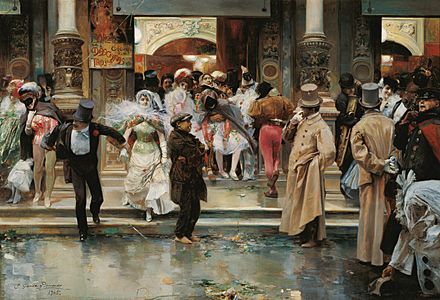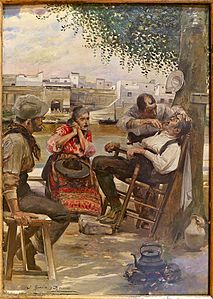José García Ramos facts for kids
José García Ramos (born in Seville, Spain, in 1852 – died in Seville on April 2, 1912) was a Spanish painter and illustrator. He was best known for his costumbrista scenes, which are paintings that show everyday life and customs of a specific region or time.
Contents
Early Life and Training
José García Ramos began his art studies at a young age. When he was just nine years old, he joined the "Escuela Provincial de Bellas Artes de Sevilla," which was a special art school in Seville. There, he learned from a teacher named Eduardo Cano.
Later, he continued his art education in the studio of José Jiménez Aranda. A studio is a special room or workshop where an artist works. In 1872, José García Ramos traveled to Rome, Italy, with his teacher.
Life as an Artist
While in Rome, José García Ramos painted small landscapes and portraits. He painted pictures of people visiting from Andalusia, a region in southern Spain. These paintings helped him earn money. In Rome, he also met Mariano Fortuny, another famous painter. Fortuny's style greatly influenced José García Ramos's own artwork.
In 1877, José García Ramos visited other Italian cities like Naples and Venice. In 1882, he returned to Spain, making a short stop in Paris, France, on his way.
Teaching and Recognition
After returning to Spain, José García Ramos became a professor at the "Escuela de Artes Industriales," which was a school for industrial arts. He also became a member of the Real Academia de Bellas Artes de Santa Isabel de Hungría, a respected art academy.
He worked as an illustrator, creating drawings for several magazines. Some of these included La Ilustración Artística, La Ilustración Española y Americana, and Blanco y Negro. In 1900, he won third prize at the Exposition Universelle (1900), a big world's fair held in Paris.
Artistic Style and Legacy
José García Ramos loved to paint traditional scenes. He is considered a very important artist in showing the regional life of Andalusia. His paintings often captured the daily activities, festivals, and people of his home region.
In 1917, a few years after he passed away, a group of artists suggested building a memorial for him. They wanted to build a special gazebo in the Jardines de Murillo, which are gardens in Seville. The government agreed, and artists helped collect money to pay for it. The memorial was opened to the public in 1923.
You can see many of his well-known paintings in museums today. Some of his works are displayed at the Carmen Thyssen Museum in Málaga and at the famous Museo del Prado in Madrid.
Selected Paintings
See also
In Spanish: José García y Ramos para niños






